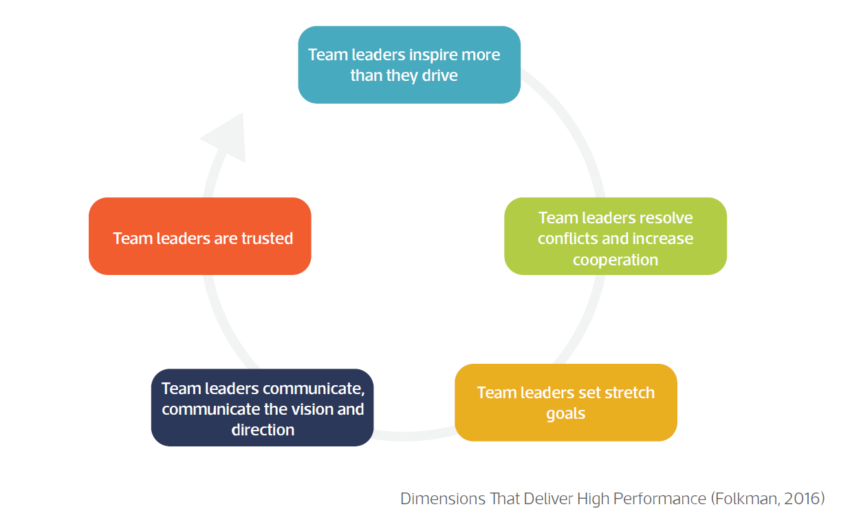What is different about a ‘high-performing team’?
"In today's world, a number of people put together simply to carry out an activity do not necessarily qualify as a team. There are other elements required, such as having a shared vision, personal relationships, co-creation and, as an emerging trend, a sense of community, collaboration and belonging" Abib-Pech (2013)
Establishing a High-Performance Team
Stagel, K. et al (2007) propose ten ‘rules’ for establishing a higher-performing team:

Leading a High-Performance Team
Folkman (2016) writes that a collaborative leader begins with a shared vision or understanding of what needs to be done. This vision is the starting point and it is shared and repeatedly championed by the leader so that the team have a clear picture of the direction of travel. Next, the collaborative leader will build trust by appropriate and timely sharing of themselves, their experiences and dreams. People who are trusted as leaders will inspire people to go the extra mile.
Friction in teams is inevitable. Leaders who have well-developed interpersonal skills reduce the potential for time-wasting conflicts by reading people, spotting those who might work well together. Conversely, they may resolve or anticipate conflict. By keeping relationships in the team “clean” a team will perform better.
As a leader of a high-performance team you need to set goals which stretch people beyond what they thought they could do, but you must have the confidence and competence to scaffold their experience so that they succeed and don’t experience damaging failure which causes loss of confidence and freezing.
Your personal brand should be trusted. People need to be proud to work with you. Folkman (2016) identifies three dimensions of trust: you must be worth of respect and preferably likable, you need to be able to roll up your sleeves and work alongside your team to solve problems, and you must be a paragon of consistency in the way you treat team members.

References
Abib-Pech, M. (2013). Leadership: How To Lead Effectively And Get Results Pearson Education Limited
Boyett. J. H. & Boyett, J. T. (1998). The Guru Guide: The Best Ideas of the Top Management Thinkers John Wiley and Sons, Inc.Conger, J., and Riggio, R (Eds.). The Practice of Leadership (pp. 172-197). San Francisco: Jossey-Bass
Folkman, J (2016). 5 ways to Build a High Performance Team https://www.forbes.com/sites/joefolkman/2016/04/13/are-you-on-the-team-from-hell-5-ways-to-create-a-high-performance-team/
Stagl, K., C., Salas, E., and Burke, C., S (2007). Best Practices in Team Leadership
Zenger, J & Folkman, J (2007). The Handbook for Leaders: 24 Lessons for Extraordinary Leadership (UK Edition) McGraw Hill Education
Further Resources

